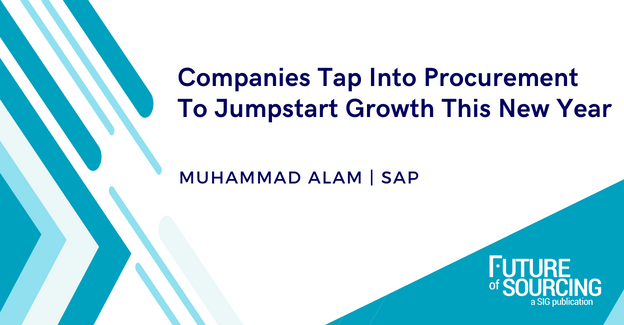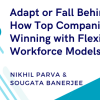Shifts in demand, rising prices, labor constraints, supply shortages and economic uncertainty have put a dent in profits. Supply chain savings can make up for it, says Muhammad Alam, President and Chief Product Officer for SAP Intelligent Spend and Business Network (ISBN) Product Engineering and General Manager for SAP Business Network.
Businesses weren’t prepared for the massive disruptions to global supply chains that the pandemic sparked. And they’re feeling the pain. According to research from SAP, 58% of companies have seen their revenue decline in the last three years. For many, growth remains stalled, and they are relying on procurement to restart that engine. Why procurement? Because it all comes down to costs and supply assurance – and procurement controls both.
Managing spend has never been more critical (or difficult) than it is today. Raw materials have become harder and more expensive to source. The labor market is among the tightest the world has ever seen. Consumer buying habits and demand change by the minute, and the economy remains uncertain. Taken individually, these challenges are daunting. Add them up, they’re crippling.
The number one priority for companies in today’s volatile and uncertain environment is ensuring business continuity and supply-chain resiliency while also taking out costs. To keep business moving, companies must be assured that they can get the raw materials they need to deliver on point and on time. And when there are risks to elements they depend on, they must be able to quickly find new sources of supply and plan collaboratively with their trading partners in a way that provides for agility and future resiliency.
Procurement can help achieve this.
How? By rethinking the way supply chains work and leveraging technology to make them smarter, more efficient and cost effective.
A Fresh Look
It’s been said that what you can’t see can’t hurt you. When it comes to managing spend, nothing could be further from the truth. If you can’t see it, you can’t control it. And if you can’t control it, you can’t optimize it.
The key to reigning in costs lies in creating predictability, around what is being spent and with whom. To do this requires deep visibility across categories – from direct and indirect to external services, contingent labor and travel and expense. The manual processes and disparate systems that have traditionally driven the process – and in many cases still do – make it difficult to get.
A Modern Approach
But technology has evolved. Intelligent spend management platforms, for instance, connect virtually every step and piece of data together across the entire source-to-pay process. Leveraging the networks on which they are built and insights and data that reside within them, procurement can gain a clear view into their suppliers, strategic sourcing, procurement, and financial supply chain processes and manage them in an integrated, digital way to deliver the efficiencies and savings their organizations so desperately need.
A Dynamic, End-to-End Process
Starting with sourcing, buyers can find the right suppliers and work with them to deliver the right products in the right places at the right time. If a supplier is unable to deliver due to supply shortages, labor constraints, logistics snarls or any number of issues, they can quickly vet and onboard new ones who can. And they can negotiate competitive, best-value agreements that yield sustainable savings and manage contracts to drive compliance and ensure these savings reach the bottom line.
On the procurement front, they can reduce maverick spend by automatically guiding employees to preferred vendors and enabling them to purchase the goods and services they need with a few clicks.
They can also better manage their cash and ensure the financial stability of key partners by offering early payments in return for discounts.
And they can do it all through a single, unified interface that integrates easily with the back-end systems that power the rest of the business.
A Game Changer
The move to digitize spend management has been on for decades. And it’s paying off for companies around the world.
“The benefits were quite simple really,” said Paul Bray, Partner, Deloitte MCS Limited. “They were associated with using our strategic suppliers and making sure we obtained authorization before commitment to spend. Those were the two drivers of the £10 million a year in benefits that we achieved.”
But it’s time to pick up the pace. The current economic storm shows no signs of letting up anytime soon. In fact, one in three of the business leaders who participated in the SAP research expect it to last through the end summer 2023. To help their organizations weather it, procurement needs to abandon traditional ways of managing spend that essentially have them flying blind. They need to embrace more intelligent, technology-enabled methods that provide the transparency and agility needed to make informed decisions and fuel efficiencies, savings and growth, while engaging with a business network to discover new sources of supply, both effectively and efficiently. It’s a game-changing concept. And business needs it now, more than ever.
Region:








